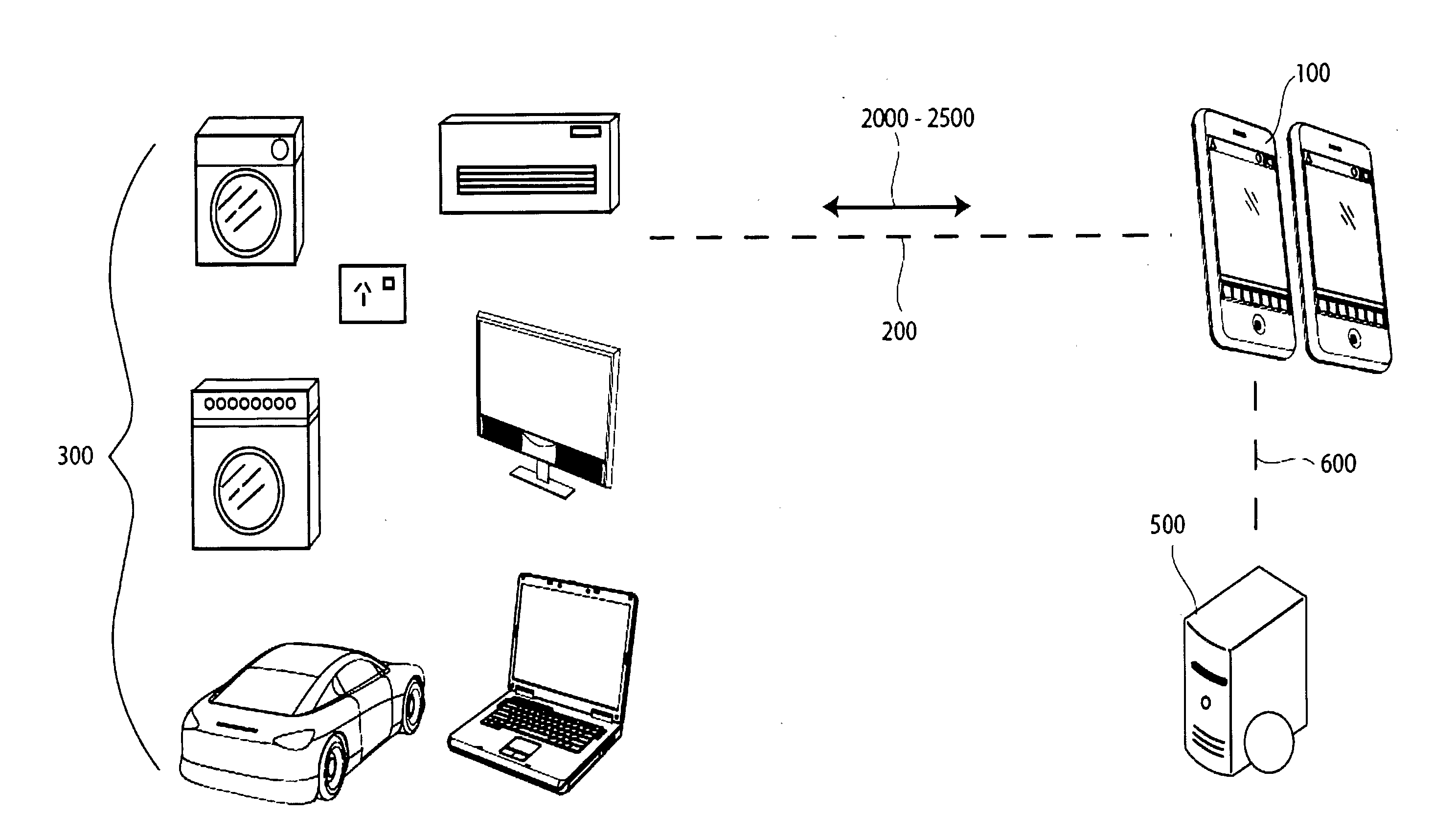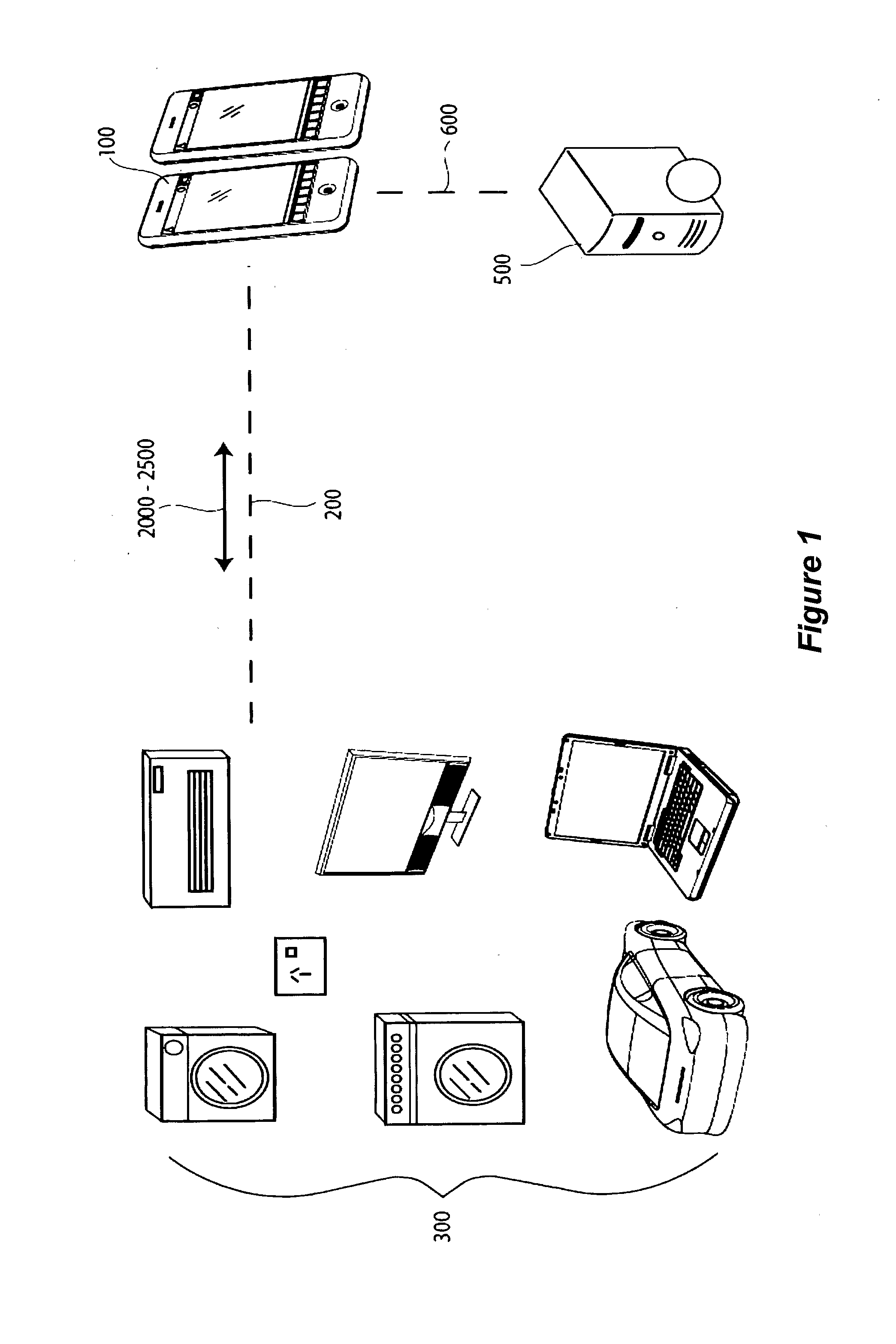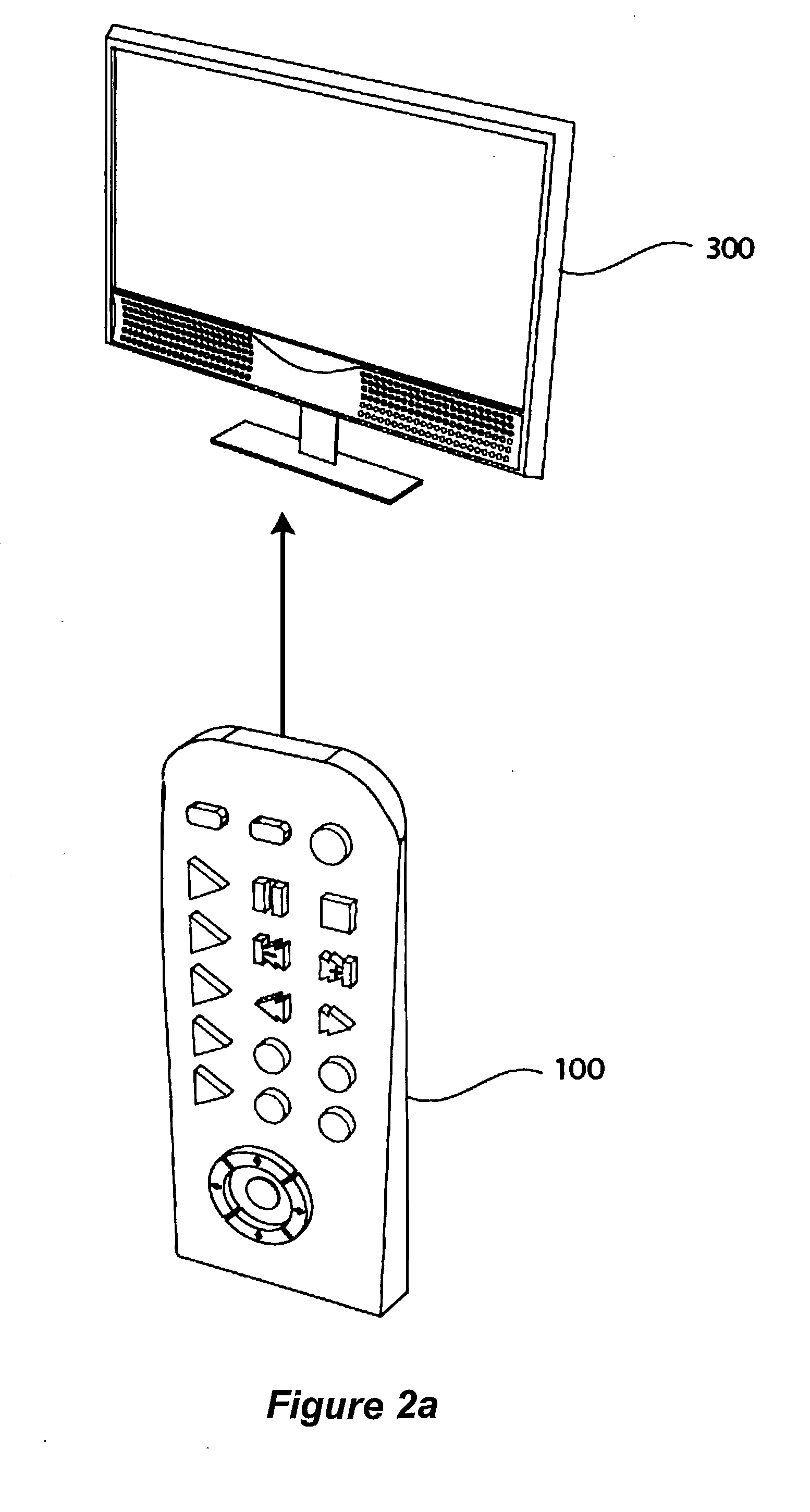Arrangement for managing wireless communication between devices
a wireless communication and device technology, applied in the field of remote control and remotely operated devices, can solve the problems of reducing the convenience provided by the remote control itself, complicating the programming situation of the user, and complicated remote control
- Summary
- Abstract
- Description
- Claims
- Application Information
AI Technical Summary
Benefits of technology
Problems solved by technology
Method used
Image
Examples
Embodiment Construction
[0044]The present invention to be discussed in detail below generally discloses a new and inventive remote control technology that is adapted so that a controller may control and interact with any kind of appliance or general device and that does not require the user to have to perform any setup or configuration in order for the system to operate other than a simple association between controller and self-describing device.
[0045]In the present invention:[0046]a ‘self-describing device’ or simply ‘device’ refers equally to an item of hardware or a software application;[0047]a mechanism refers to functionality that can be realized in either hardware or software or a combination of both;[0048]a display mechanism refers to an item that can display visual information to a user such as an LCD, touch-screen, or projection system;[0049]the first device is one having access to at least it's resource description file. This device can be realized in either hardware or software or a combination...
PUM
 Login to View More
Login to View More Abstract
Description
Claims
Application Information
 Login to View More
Login to View More - R&D
- Intellectual Property
- Life Sciences
- Materials
- Tech Scout
- Unparalleled Data Quality
- Higher Quality Content
- 60% Fewer Hallucinations
Browse by: Latest US Patents, China's latest patents, Technical Efficacy Thesaurus, Application Domain, Technology Topic, Popular Technical Reports.
© 2025 PatSnap. All rights reserved.Legal|Privacy policy|Modern Slavery Act Transparency Statement|Sitemap|About US| Contact US: help@patsnap.com



